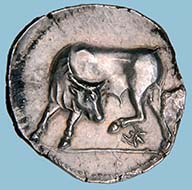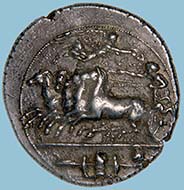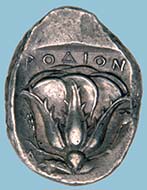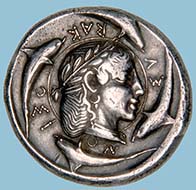23-10-2011 – 01-01-1970
C51: A Collection of Exceptional Ancient Greek Coins
Morton & Eden’s Sale of Exceptional Ancient Greek Coins Realizes over 4 million GBP
On October 24, 2011 at Morton & Eden’s a collection of exceptional ancient Greek coins was auctioned realizing GBP 4,071,156 (EUR 4,676,136, $6,518,842) for the total of 168 lots.
Celebrating a 100 per cent sold sale, specialist in charge Tom Eden said he was delighted by the response to the coins in this single-owner private collection, many of which were of exceptional quality and rarity. “This collection was formed over the last 50 years and many of the most significant examples had been purchased in the 1960s and 70s. Since then, the owner has researched and recorded the provenance of each coin, many of which were until now previously unavailable to present-day collectors. These factors added greatly to their desirability. The response from bidders both in the room and on the Internet, was extremely pleasing, while the results speak for themselves, recording a total of almost double our top estimate.”
Highlights include (prices shown include the Buyer’s Premium of 20%):
Lot 126: Estimate: GBP 60,000-80,000. Realized: GBP 300,000. Buyer: Private collector.
Crete, Gortyna, stater, c. 330-270 BC, Europa, semi-nude, seated facing in plain tree with trunk in the form of left-facing bull’s head, raising veil toward her head with right hand and with left holding eagle with spread wings on her lap, rev., bull standing left with head turned back to ward off fly from his left rear hoof, 11.52g, die axis 7.00, the finest of apparently only three known examples of this variety, extremely fine and of the highest rarity, of exceptional quality.
References: Kunstfreund 206 = Nomos 1, Zurich, 6 May 2009, 89, same dies; Svoronos 85 (a worn and pierced example in the Royal Coin Cabinet, Utrecht), same dies; BMC -; Le Rider -. Provenance: Purchased Spink, 30 June 1965.
This is certainly one of the finest known staters of Gortyna depicting Europa with, unusually, Zeus in his two disguises on the obverse, both as an eagle and as a bull. A different, less powerful, die is known of the same type (as Svoronos 84 and BMC 30), which is combined with a more conventional bull on the reverse. Cretan coins of the 4th and 3rd centuries were overstruck on coins brought back to the island by mercenaries returning from abroad. Consequently they are normally found in indifferent state with traces of the undertypes interfering with the local designs, which mostly represent Cretan mythology. The present coin distinguishes itself as being carefully struck on flans that show no evidence of overstriking (although the broadness of the flans suggests otherwise).
Lot 59: Estimate: GBP 60,000-80,000. Realized: GBP 228,000. Buyer: US dealer.
Sicily, Syracuse, decadrachm, an unsigned work by Kimon, c. 400 BC, fast quadriga driven left by charioteer who holds goad over horses in extended right hand and reins in left; above, Nike flies to crown charioteer’s head; in ex., arranged on two steps, shield, cuirass between two greaves and helmet, rev., head of Arethusa left, her hair in ampyx and held in net at back of head, wearing single-drop earring and pearl necklace; four dolphins around, 43.23g, die axis 9.00, traces of die rust on obverse but otherwise extremely fine, the Arethusa head exceptional and perfectly centered on a large spread flan, very rare.
This coin published: Jongkees 9s; K. Regling, Dekadrachmen des Kimon, Berlin 1914-5, 9h. Other references: Gulbenkian 305; Dewing 871; Jameson 820; SNG Lockett 989, all from the same dies. Provenance: LHS Numismatik 95, Zurich, 25 October 2005, lot 525; Countess Zichy collection; Hirsch VII, 2 June 1902, lot 133.
Lot 160: Estimated: GBP 50,000-80,000. Realized: GBP 144,000. Buyer: Private collector.
Islands off Caria, Rhodes, tetradrachm, c. 404-385 BC, laureate head of Helios facing threequarters right with traces of chlamys around neck, rev., rose with small bud on right and ear of corn on left, below which, D, 15.34g, die axis 12.00, struck on a full oval flan, of exceptional style, extremely fine, very rare, one of the finest tetradrachms of Rhodes.
This coin published: D. Bérend, Les Tétradrachmes de Rhodes de la Première Période, SNR 51, 1972, 50 (with enlargement on pl. 9); Ashton p. 142, 55. Other references: Jameson 1552 var.; Pozzi 2685 var. Provenance: Bank Leu 2, Zurich, 25 April 1972, lot 259 (with enlargement on pl. 29).
Lot 51: Estimated: GBP 30,000-50,000. Realized: GBP 108,000. Buyer: European dealer.
Sicily, Syracuse, tetradrachm by the Demareteion Master, c. 465 BC, slow quadriga driven right by charioteer with Nike flying above to crown horses’ heads; in ex., lion running right, rev., head of Arethusa right wearing laurel wreath, pendent earring and plain necklace; around, four dolphins, 17.40g, die axis 9.00, toned, good very fine and very rare.
References: Boehringer 380; Jameson 753; Boston 357; BMC 64; SNG ANS 121, all from the same dies. Provenance: Leu Numismatics 86, Zurich, 5 May 2003, lot 279; Kunstfreund (Gillet) collection, Bank Leu/Münzen und Medaillen, Zurich, 28 May 1974, lot 104.
Further information on Morton & Eden and on the next auctions you will find here.







